One Man Dancing is a harrowing tale of integrity and endurance. Based on the true story of a young actor growing into artistic maturity in Uganda during the murderous regime of dictator Idi Amin, the action moves in and out of Africa through bizarre encounters with mysterious CIA-like figures and the international world of theatre. Trying to maintain his personal sanity while remaining true to his art, Charles collides constantly with political violence and natural disaster. It is a capricious fate that bounces him from Uganda to Jamaica, from Scandinavia to Canada and back again through this novel of risk and freedom, of political mystery and ultimately through the unravelling of this myth about theatre and faith.
“One Man Dancing is a sympathetic account of Uganda’s troubled post-colonial history and a paean to the heroic figures who struggled to resist the regime and retain their own dignity during tumultuous times while Idi Amin was descending more deeply into barbarism. At the level of history, it’s a chilling story, but it’s also a fascinating study of the role of art in addressing political realities. Patricia Keeney’s account of this struggle is brimming with Eros and Thanatos—the violence, intrigue, passion and deadly love-muddle—inevitable bi-products of living in this world.”
—Gary Geddes, author of Drink the Bitter Root and The Resumption of Play
“This moving story of an African dancer whispers rage in every line. A handbook for future generations interested in African politics, it is also a story of love and the theatre company that inspired it as well as a story of home-grown African dictators and their armies. Though set in the Uganda of Idi Amin, this book is about butchers all across the continent who are unable to face Truth. It is a story of power walking out of a theatre in fury. As an artist who has personally experienced torture, as an African man, I can say that this Canadian woman, Patricia Keeney, has miraculously told only the Truth in this wonderful novel about art and artists.”
—Debebe Eshetu, Former Artistic Director of the National Theatre of Ethiopia, Addis Ababa, and Founding President of the Union of African Performing Artists
“Africa’s theatrical secrets are starting to get out and we are all the better for it. Uganda’s myth-based Abafumi theatre company toured the world in the 1970s to international acclaim while Idi Amin tried to face them down at home. This clash is at the centre of Patricia Keeney’s fine new novel based on the true story of one of the company’s leading performers and his struggles to survive. Well worth-reading for those who know Africa and its theatre and especially good reading for those who are meeting it for the first time.”
—Prof. Emmanuel S. Dandaura, President, Nigerian Centre, International Theatre Institute
“Very interesting to read. Such extraordinary stories and so fascinating to hear insider tales of Uganda under Amin. It does seem a country still living out traumatic heritage in many ways. Also with my researcher hat on, really interesting stories of the history of Ugandan theatre.”
—Jane Plastow, University of Leeds, U.K.
“This bio/fiction brought back a lot of memories. I have been laughing, crying and angry. Charles’ journey through Abafumi is pretty much like our story of Abafumi…but there are many stories to be told. We are all very grateful for what Robert did for us and what we achieved. [Patricia Keeney] has opened the gate for more stories of the great company Abafumi. Our lives have very much depended on it . We are the storytellers, The Abafumi. Thank you for a wonderful novel Pat and putting our memories to life again through Charles.”
—Richard Sseruwagi, Actor and Musician
“Very well conceived and superbly accomplished. Very much a poet’s work too. I love the descriptive power, the sensuous touches, the dramatic resonance; the way the prose takes us so fleetingly through these several moments of tragic history without being ponderous or tedious; the evocative power of the narrative. The African scenes are so vivid and authentic, as are the several art emporia around the world that are featured… I can’t frankly find the words to describe my great pleasure at reading this book.”
—Femi Osofisan, world-renowned Nigerian playwright

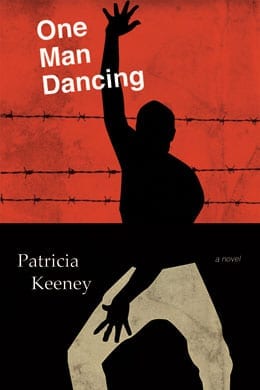
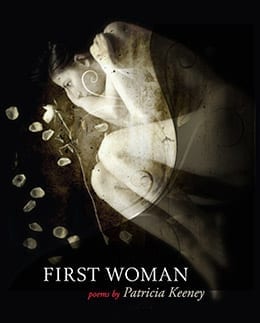
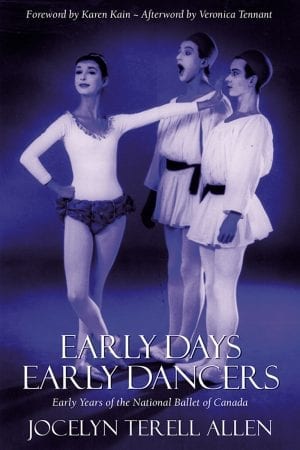
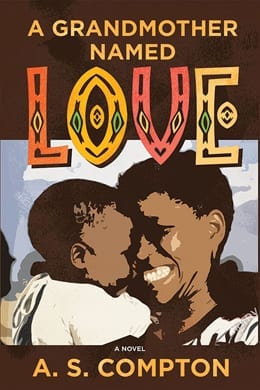
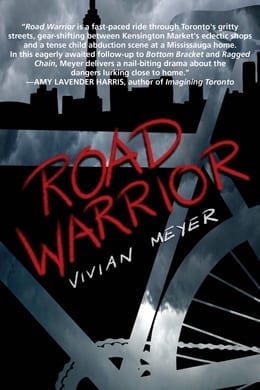
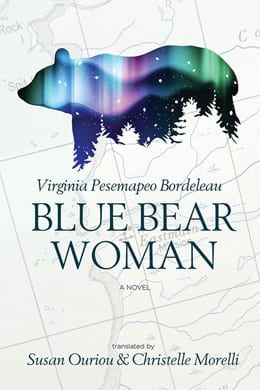
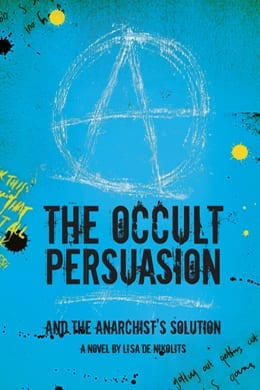
inannaadmin –
Stage Artists Who Risk Their Lives
One Man Dancing by Patricia Keeney
reviewed by Margareta Sörenson (Stockholm, Sweden)
Teatr Dans (Theatre Dance Magazine) – October 2017
This is the story of a dancer from Uganda, now living in Canada, who was part of the legendary dance-theatre group Abafumi, a company which toured the world in the 1970s while on a collision course with dictator Idi Amin.
Canadian author Patricia Keeney calls One Man Dancing a novel. She explains early in the book why this true story of Ugandan dancer-actor Charles Tumwesigye could not have been done in strictly documentary style. The novel form, she says, gave her the literary freedom to go deeper, to move more freely around a sensitive and wide range of artistic and political experiences in an effort to truly capture the flavours, colours and impressions of an artist’s life. Her decision to work this way– certainly enriching for a reader — was supported by Charles himself (called Kiti as a child) who lived a life that was clearly both thrilling and bewildering.
That said, this is not just a novel about a young boy who wants more than anything else to simply dance. It is also a highly absorbing novel about Uganda and, more widely, Africa itself. Specifically, it is Uganda’s modern political history, which serves as the artistic frame for Charles’ personal and professional evolution as an artist. Determined from childhood to be a dancer, he convinces his father early on that he has to leave his family home and study in the nation’s capital, Kampala. It is there — at a missionary school founded by the British — that he makes his first contacts with the arts.
Invited through his theatre teacher to apply for membership in a new theatre troupe called Abafumi (The Storytellers), he auditions for its dynamic and demanding director, Robert Serumaga and is accepted. There he is challenged on many levels while still a teenager: long workouts, an introduction to theatre and dance, an opportunity to perform and travel. Serumaga also pushes his communal company to find its own multi-ethnic African roots, encouraging Charles in the process to find his own history and give it aesthetic form.
Almost contemporaneous to the founding of the company was the 1971 coup in Uganda that brought dictator Idi Amin to power and saw the expulsion of Asians and Europeans from Uganda. Amin’s reign of terror, which lasted to 1979, was felt acutely by the Abafumi company.
Yet they continued to perform – at home, in Africa and then the world. In the ‘70s they were, in fact, among the first African troupes to play – to great acclaim — at international theatre festivals. What they offered were essentially non-verbal productions utilizing dance at the centre of their physically-based storytelling, the stories themselves often based on core Ugandan myths. Their work was met world-wide with huge interest at a time when so many newly-independent African nations were emerging. When Abafumi returned home they were seen as a model for other companies and their influence was real.
We learn too in the novel about Robert Serumaga himself – the scion of a wealthy family. Trained at Trinity College in Ireland, he came into contact there with the ideas of such theatrical innovators as Artaud and Grotowski. With Abafumi, Serumaga adapted some of these still experimental physical theatre techniques and introduced them to the world with an African spin. Keeney’s own award-winning work as a theatre critic comes to the fore here in her theatrically rich descriptions of the work.
But the story becomes complicated when Amin begins to suspect Abafumi of questioning his power and possibly accepting funds from the CIA. Amin strikes out against the company and orders them killed. Some – though not all — manage to get out of Uganda with their lives. Serumaga himself, we learn, joined the anti-Amin resistance movement and later became a member of the Ugandan government itself when Amin was ousted.
The company, however, could not sustain itself out of Uganda either in Kenya or in Italy where they were supported for a time by the Vatican in modest and unusual refugee accommodations. The company – and especially Charles — maintained hope, however, until the moment that they learned that Serumaga had been mysteriously murdered. And then the Abafumi story is essentially over. The artists separate even further. There is a failed attempt by Charles to gain asylum in Sweden (note: another Abafumi member, Richard SSeruwagi, did manage to get to Stockholm, and he has had a long and successful career here as actor and musician). Eventually Charles manages to emigrate to Canada where he lives today. There, in the novel, he shares his life for a time, with one of the actresses in the group and tries to start a company in Abafumi’s image while working as a meat cutter in a slaughterhouse.
It is in western Canada, in the Rocky Mountains, that we see Charles once again facing still another test of survival as the car he is driving is caught in a tornado. Ultimately, he is torn from top to bottom and almost left for dead. It is at that dramatic point that this fine novel starts and takes us back through his life. And then forward again as this former dancer –musician- actor finds that he now must depend on physiotherapists, psychologists and social workers to get himself out of his wheelchair. A man who had mastered his body so perfectly, a man who was so tall and handsome and always a hit with the ladies, Charles now has to be taught to move from stillness once again by nurses and doctors.
Keeney reveals to us in the novel that she first met Charles in Canada while she was working as an editor on Routledge’s six-volume World Encyclopedia of Contemporary Theatre project, a series edited by her husband Don Rubin. Sponsored by Unesco’s International Theatre Institute and the International Association of Theatre Critics among others, the series, which was completed in 2000 is still in print and is still used by theatre critics and scholars.
We learn that after meeting the real Charles Tumwesigye as part of an effort to find material on Abafumi, Keeney first heard his amazing story from him and then spent some two years interviewing him and working with him to tell it. She recounts the process carefully, building her bridges between fiction and truth with great sensitivity. Clearly not an easy story to tell, her caution in dramatizing it is real, like a shadow sometimes around the edge of the tale accentuating its interest and its mystery. As someone interested in physical theatre and dance, I personally wanted to know more about what Abafumi’s work looked and felt like. But non-verbal theatre – vivid as it may be – leaves only an ephemeral record, particularly in times of political upheaval.
A fascinating book, an information source and a page-turner.
It is now some 40 years since Amin was overthrown but Uganda and its 40 million inhabitants living along the Nile in the north and Lake Victoria in the south is still a country without a real democracy. Still criticized for its human rights record and its ongoing criminalization and discrimination against LGBT people, one still hears its artists crying out. In an interview in the latest issue of the web-journal Critical Stages (critical-stages.org), the Ugandan playwright Asiimwe Deborah Gkasugi speaks about the difficulties of doing political theatre, referring specifically to her own play Cooking Oil. Still, she is optimistic for the future, hoping that Uganda’s political leaders will come to understand how crucial it is for them to support not only theatres and companies but also the idea of an independent artistic life.
Keeney’s important book underscores that point.
inannaadmin –
One Man Dancing by Patricia Keeney
reviewed by Octavian Saiu* (Romania) – July 2017
http://www.critical-stages.org/
The story of an actor . . . The story of a country . . . The story of a continent . . . All of these would be fitting expressions to describe the novel written by Patricia Keeney, whose title, One Man Dancing, is both self-explanatory and enigmatic at one and the same time. Indeed, this phrase contains the key elements of the book, as it reflects the loneliness of an African artist struggling to maintain his freedom in the face of personal and collective suffering. His name is Charles Tumwesigye.
Although written in such a way that it appears to be a product of pure imagination, this book, as its final pages reveal most emphatically, is based on real facts. Situated between fiction and non-fiction, between the subtlety of language and the harshness of actual history, Keeney’s work is an attempt—and a highly successful one at that—to transcribe the destiny of a being who finds in his art the only possible response to the conundrums of his life.
And what a convoluted life he has led: born in Uganda, he becomes an actor and then a member of a legendary theatre company that tours extensively in Europe and the Americas; he earns fame and loses everything, including his own country, before eventually emigrating to Canada, where he still lives. Alone. In everything this improbable hero does, as recounted in the book, he seems to be irremediably alone.
The novel creates a sense of chronology that challenges the usual patterns of storytelling. It begins with the all but indescribable scene of a tornado in which the protagonist’s small car is turned into a piece of flying metal. Crushed. Annihilated. Memory is lost, but memories remain intact
Childhood, adolescence, the journey into manhood unfold against the political backdrop of a country tormented by the grotesque spectre of a bloodthirsty dictator. Idi Amin, the Ugandan leader who mutilated his own nation, is the constant shadow that accompanies the book’s main character. He never appears as such, not in the explicit and forceful way he does in The Last King of Scotland, but he is always there, even when he is absent.
This is, in a sense, a political novel, a bitter contemplation of the disaster wrought by dictatorship in a country whose bright colours of hope and culture may never shine again. These colours are on display during Charles’s childhood, when he discovers a world dominated by the figure of his father, a man who gradually vanishes over the course of the book, eventually being reduced to a state of frailty and loss. In fact, he is no longer there any more, merely being referred to in the account provided by an old friend. Indeed, Charles never goes back to see his dying parents, the rift between him and his homeland thus becoming irreversible.
The novel’s central theme is exile, both forced and self-imposed: through art, through love, through everything entailed by belonging to a company of actors that were to become the free image of a controlled nation. The name of the company may sound familiar to certain theatre people, particularly those who have explored the history of African performance: Abafumi. There is very little, almost nothing, in the book that is not related, directly or indirectly, to this company responsible for a series of stage works, challenging in various ways.
Its artistic driving force, Robert Serumaga, seems to be the implied main character: he is Charles’s creative mentor and the one to influence his existence in a way that no one else is able to. He is the one who, negotiating perils of all kinds and using his status as a shield, nurtures liaisons with American agencies in order to ensure the international trajectory of his actors. These agencies are not always artistic, however, and his relationship with the CIA is constantly hinted at, though never clarified. This remains a mystery, not only for the reader, but also the writer and for Charles himself. His point of view provides the key to the entire narrative and is carefully juxtaposed with remarks about the world that emerge from broader research conducted by Keeney in the fields of African history, anthropology and, of course, theatre.
Although this book clearly lends itself to cinema in a most organic way, theatre remains its real core. Not merely because its main character is a trained actor, or because his identity is shaped by the company run by Robert. Not even because everything is infused with the energy and inspirations of real stage life. Rather, the entire novel is accompanied by a constant sense of theatricality, becoming something akin to a long monologue interrupted by the voices and the presence of others. The subject matter is African theatre, imbued with myth and local specificity. However, the general tone is theatrical in a more . . . universal fashion, thus making the book appeal to readers from anywhere, above all to readers who are also spectators. It is the Joycean theatre of the mind, turning the banality of the everyday into the stuff of dreams, into the very fabric of stage emotions.
Unsurprisingly, again in the spirit of Joyce, Shakespeare’s most famous work is the catalyst for Charles’s dilemmas and inner contradictions. The protagonist’s discovery of Hamlet, the character and the play, provides one of the central moments of the book. His existential doubt is then voiced in a manner that echoes Hamlet’s mantra, to be or not to be. For Charles, every aspect of life is a source of hesitation—from the moment he thinks he wants to quit the company following a row with Robert, the uncompromising artistic leader who compromises one of his company’s performances, to that of his attempt to claim asylum in Sweden, a country that rejects him on the grounds of his possession of false papers. Nothing is ever clear, the effect of absolute determination. Everything is uncertain, unstable, at the mercy of exterior circumstances and deeply affected by the character’s constant quandaries.
Charles is, ultimately, an African Hamlet, and in a way that the immeasurably more famous boy from The Lion King cannot be: in his mind, in his feelings. Even the love he feels for a fellow actress is a relative sentiment, heavily imposed by circumstance. Nothing in him resembles the strong willpower possessed by Robert, who manages to take the company from the obscurity of Uganda to some of the greatest stages of the world: Caracas, Amsterdam, Krakow.
All these places are immediately significant in the journey of this African Hamlet, as if they were stations in a Bildungsroman with no ending. And each of them is treated by Keeney with enormous attention to detail—not so much exterior as interior. Each such encounter is analyzed in terms of the way Charles sees things, how he perceives the novelty of place, the reality of cultural and human difference.
One example becomes more evocative than any other next. While in Poland, the African company visits Auschwitz, that place of utter horror and inhumanity. Right there and then, they each have a revelation that would seem to be a mise en abyme: Amin’s regime is for Uganda what Hilter’s holocaust was for Europe. This sounds like a historical verdict, formulated unpretentiously, one that could make all western, white, “civilized” people relate to the atrocities of recent African history. Genocide is too abstract; holocaust seems a more appropriate term of comparison.
Like Hamlet, it is also a metaphor, a means of contemplating African truth with a sense of assumed responsibility. Beyond facts and feelings, reality and fiction, this is the enduring message of One Man Dancing, a human and humanistic perspective on Africa in which theatre becomes the common ground for every reader, from everywhere.
As revealed at the end, the book is the direct result of a different sort of theatrical encounter that owes much to Don Rubin. This esteemed scholar edited Routledge’s World Encyclopedia of Contemporary Theatre, a uniquely complex venture during which he relied on colleagues and sources from all over the world. One of these sources was none other than Charles.
It was this improbable connection, demystified in the end, that led to the writing of this novel, which the author gracefully pens without ever resorting to the first person. Whose novel is it? Whose story is ultimately being told? Hers? His? A list of honest clarifications is provided so that no alteration might compromise the accuracy of the account in both historical and human terms. The reader is thus afforded a clear insight into the genetic development of the book and everything else besides the first scene—that of the Canadian tornado—is explained and justified. And yet . . .
And yet, its mystery remains, lingering beyond the pages of this beautiful work, whose title now seems more poignant than during the process of reading. One Man Dancing is more than the tale of a Ugandan artist or the account of a Canadian author inspired by it. It is certainly more than a chronicle of a theatre group, built and disintegrated against the backdrop of tragic political events.
It is the story of African otherness, something that not even in or through theatre can be properly apprehended. It is the narrative of an unknown world in which people live, love and dance away from the spotlights of world history. This novel tries to shine a huge spotlight on one of Africa’s most unsung theatrical heroes, the lead actor of Abafumi, Charles Tumwesigye. The Ugandan Hamlet, always dancing alone.
About the reviewer: Octavian Saiu, Adjunct Secretary General of IATC and President of the Romanian Section – Theatre Studies of IATC, holds a PhD in Theatre Studies, for a thesis about theatrical space, and one in Comparative Literature, for a thesis about Samuel Beckett and Eugène Ionesco. He completed his Post-Doctoral Research in European Literature (Modernism) and has been awarded his Habilitation in Theatre and Performing Arts. He teaches postgraduate courses in Romania and Japan, and has offered Master Classes at other universities in Europe and Asia, as well as the Grotowski Institute. He has published articles in several international journals, as well as nine books on theatre, and he received the Critics’ Award in 2010 and the Award of the Union of Theatre Artists (UNITER) in 2013. Actively involved in various international events around the world, he has chaired talks and seminars at Edinburgh International Festival, the Theatre Olympics and Sibiu International Theatre Festival. His most recent publication in English is the monograph, Hamlet and the Madness of the World (2016).